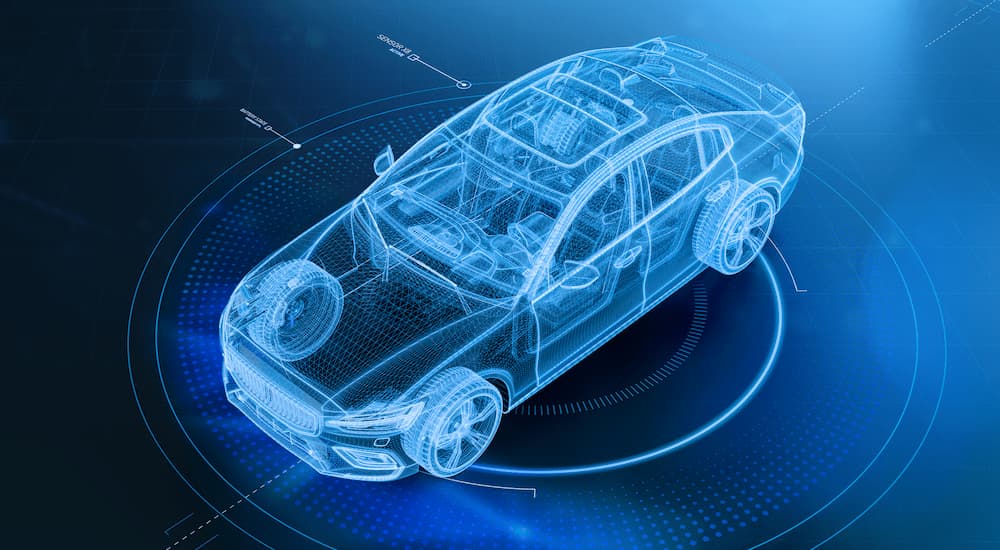For decades now, science-fiction movies and TV shows have been predicting impressive technological innovations like self-driving cars (as well as flying cars and vehicles powered by nuclear fusion). With each passing day, we’re getting closer to cars that can drive themselves and require little-to-no input or attention from the driver; the flying cars are a long way off (that’s probably a good thing, but I’m still bitter about it). You can already find the early stages of self-driving technology in cars, trucks, and SUVs being sold right now with impressive names like “Autopilot” and “Super Cruise.”
Most experts agree that once automation is fully developed, assuming the technology works the way it should, crashes will be drastically decreased in frequency. Even better, when collisions do occur, they should be less destructive and harmful, with increased safety for passengers in any vehicles involved. Unfortunately, that’s only going to happen at some point in the future. Right now, we have incomplete technology that sounds like it can do more than it actually can. Early statistics are starting to reveal that semi-autonomous driving technology isn’t as safe as we’d like, but that’s not entirely the fault of the car companies.
Standards for Self-Driving Technology
One of the biggest problems with the concept of self-driving technology, at this moment at least, is that the general public largely misunderstands where we’re at. To fully appreciate this, it’s important to understand how self-driving technology is coming along and has been developing over the past decade or so. The National Highway Traffic Safety Administration (NHTSA) has divided the automation of vehicles, those being able to drive themselves to some extent, into six distinct levels:
- Level 0: Momentary Driver Assistance – You’re driving and monitoring the vehicle at all times; the car can assist briefly with things like boosting steering control.
- Level 1: Driver Assistance – You’re driving and monitoring the vehicle at all times; the car provides continuous assistance with enhanced steering or braking.
- Level 2: Additional Assistance – You’re driving and monitoring the vehicle at all times; the car has a system that can be activated to temporarily perform steering and acceleration/braking for you.
- Level 3: Conditional Automation – The system drives, and you monitor the vehicle with the ability to take over at any time; the system handles all aspects of driving, including steering and acceleration/braking, while activated.
- Level 4: High Automation – The system drives the vehicle, and you’re essentially a passenger; the vehicle handles all aspects of driving itself though it’s limited to use only in certain service locations.
- Level 5: Full Automation – The system drives the vehicle, and you’re essentially a passenger; the vehicle handles all aspects of driving itself in all locations.
When you see a vehicle with a system named “Autopilot,” you might think we’re somewhere around Level 3 or even Level 4. While that kind of technology is currently being worked on and tested in very limited and strict conditions, we’re not there yet. Level 5 is clearly the destination and ultimate goal of this technology, but we’re actually only at Level 2!
Where We’re at Right Now
That’s right, despite what a fair amount of automotive marketing might like to suggest, we’re only about halfway through the development of full automation in vehicles. Right now, the best technology you can buy in a car falls under Level 2: Additional Assistance. There are no vehicles available to the public that let you activate any kind of self-driving function where you can take your attention off the road and feel like you’re a passenger if you’re sitting in the driver’s seat. It simply doesn’t exist yet.
The problem, many experts have argued, is that car companies are pushing advertising and using terms that would suggest we’re further along than we are. Names like “Autopilot” make drivers think that the vehicle can take over for them, but really it just provides advanced levels of assistance when they’re on the road. There are vehicles being tested that go up to Level 3 and even Level 4 automation, but none of these are on the road en masse or available to the public. But we’re getting there, and when we do, the roads should become a lot safer.
Semi-Autonomous Vehicle Safety
At the moment, however, roads aren’t necessarily that much safer, and all of the advanced safety features, including the currently available semi-autonomous driving technology (Level 2), aren’t helping as much as they should. For example, the NHTSA has finally started revealing information about collisions and road safety using advanced systems and features like semi-autonomous driving. They issued an order last year that required all automakers operating in the US to provide crash reports and data to the NHTSA after any collision in which advanced safety features were active within 30 seconds of the crash.
This has provided a far more comprehensive look at how well-advanced safety features are operating on vehicles and whether they’re really helping. So far, the data is not optimistic and includes the revelation that Tesla vehicles running their Autopilot software were involved in 273 crashes reported to the NHTSA in the past year, accounting for nearly 70% of the 392 crashes they’ve had reported to them during this time. Prior to the order that required information be provided to them, the NHTSA was only able to investigate 42 crashes that likely utilized driver assistance technology over the last eight years. This new requirement has made it much easier for safety organizations to see the real data and provide it to drivers.
In fairness to Tesla, there were hundreds of thousands of crashes on America’s roads last year, and if fewer than 300 of them involved Tesla’s Autopilot technology, then that’s not bad at all. The biggest problem, as far as many experts are concerned, is that human drivers are still a factor in road safety. Fantastic technology that can boost your braking efficiency, monitor drivers in your blind spot and warn you when someone slams on their brakes ahead of you is kind of pointless if the guy behind you looks at his phone, misses your brake lights, and rams into the rear of your vehicle. Furthermore, a shocking number of people pay a lot of money for impressive vehicles with advanced safety features and then turn them off.
What Does the Future Hold?
As long as these kinds of advanced safety features are optional, typically only provided on vehicles that cost more at high trim levels, things will remain unsafe on the road. Seat belts only started saving huge numbers of lives when they became mandatory in all vehicles; similarly, rearview monitors only became a major convenience when every manufacturer was required to include them. Automated safety features, and even full self-driving or Level 5 automation, are easily rendered pointless by other humans on the road driving recklessly or causing collisions.
In other words, the full potential of vehicle automation will only be realized when every car on the road features this technology. We’re probably quite a few years from Level 5 automation being available to the public and functional on most roads. Once it’s available, it will almost certainly start as a luxury option for the most expensive cars and take many more years to become widely offered, let alone mandatory. But we’re not going to see roads become safer until every vehicle out there can drive itself and function in a way that is completely predictable for every other automated car. Once that happens, we’ll see the number of crashes and deaths on the road go down, perhaps even to zero, and we’ll finally be able to safely look at our phones more each day.






